Consensing Decisions






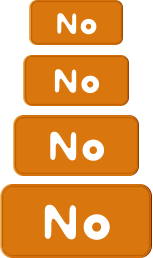
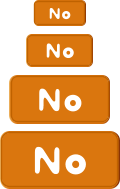
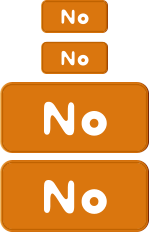



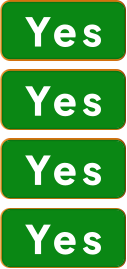
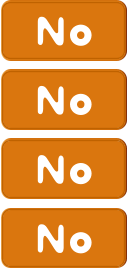


Consensing
Consent voting
Conventional
voting

How to turn your team
into the boss


- The 6 Hurdles
- The Elements
- What are the Elements
- Culture Stage Model
- Gut, Head or Herart Process
- Culture Change
- List of Feelings and Needs
- Emergency Emo-Step
- Four Step Circle
- NVC Magic Circle
- Utopia Magic Circle
- Utopia and Vision
- No-Goes and Must-Haves
- Pain Points
- Consensus
- Requirement Lists
- NVC-plus Strategy
- NVC-plus Matrix
- Discourse
- Card Set
- Download-Tool-Depot
- FAQs
- Events
- Media

6 Hurdles to Self-Organization
Chapter 21 - Reaching Consensus on Decisions
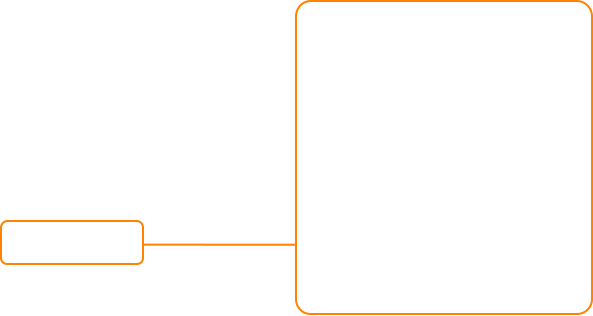


Home / hurdle 5: toolbox / consensing

How does a team decide?
What
is
the
quality
of
the
decisions
in
the
project?
This
is
a
key
question
and
a
self-managing
team
that
acts
on
eye
level
needs
a
very
good
answer
here.
It
needs
the
ability
to
come
to
smart
decisions
quickly
and
effectively,
even
though
everyone
is
allowed
to
have
a
say.
This
problem
is
well
known
and
various
approaches
have
emerged
over
time,
some
of
which
work
better
and
some
worse.
At
some
point,
four
Austrians
developed
consensing
(SK
principle),
which
is
currently
changing
the
future
of
decision-making.
In
recognition
of
this
method,
we
have
adopted
Systemic
Consensing
for
NVC-plus
and
have
been
able
to
accentuate
the
method
through
the
possibilities
that
NVC-plus
offers
us.
This
gives
us
the
answer
to
how
a
team
being
the
boss
can
come
to
very
good
decisions,
which
means
that
a
team
gets
its
intertwined
potential
into
the
joint
decisions.
However,
as
with
all
NVC-plus
tools,
every
team
is
free
to
use
consensing
whenever
it
suits
them,
or to use other tools that work better for them at the time.
Classical consensing
(SK principle, systemic consensing)
The
aim
of
consensing
is
to
make
the
best
decision
in
groups,
teams
and
communities
or
to
develop these further in the decision-making process.
It
starts
with
the
search
for
proposed
solutions.
The
proposal
that
generates
the
least
rejection
in
the
team
wins
-
i.e.
not
the
proposal
with
the
most
yes
votes
or
the
proposal
with
the
fewest
no
votes
(yes-no
duality),
but
the
proposal
with
the
least
no
potential.
The
No
votes
are
weighted
for
this purpose.
The
extent
of
the
group's
overall
resistance
is
therefore
determined
for
each
individual
solution.
The proposal with the least resistance is successful.
Advantages
•
Quick decision
•
Involves everyone
•
Creative solution finding
•
Even reserved people can participate well
Preparation - clarify the process
•
Card
poll?
Consensing
with
an
app?
With
a
tool?
Anonymously?
Who
writes
down,
who
moderates, who counts?
•
Resistance scale from 0-5 / 0-10?
•
How many rounds do we want to vote? (2, 3, 4?)
•
Has everyone understood how consensing works? Test run with harmless task?
1
.
What
exactly
is
the
problem
-
formulated
as
a
questionThis
question
should
not
be
answerable with yes or no (i.e. do not formulate a decision question!)
2
.
As with brainstorming, the suggestions are not criticized.
3
.
How
much
resistance
does
each
suggestion
generate
for
whom?
Each
suggested
solution
is
rated
by
everyone
with
resistance
points.
Zero
points
=
0
resistance
or
no
problem
with
the
solution. 5 (or 10 if you prefer) points = total resistance or you do not support this solution.
4
.
Which
solution
has
the
least
resistance?
Y
ou
add
up
the
resistance
points
for
each
solution
and compare the results.
5
.
Everyone
can
discard
their
solution,
adapt
it,
extend
it
or
leave
it
as
it
is.
You
can
discuss
what
the
resistance
is
based
on
in
order
to
improve
the
proposed
solution
or
present
it
more
clearly.
Then
a
second
and
possibly
a
third
round
begins.
In
these
rounds,
the
proposed
solutions mature quickly and adapt optimally to the group.
NVC-plus Consensing
For
NVC-plus
consensing,
you
do
not
look
for
different
proposed
solutions
to
a
problem
and
then
agree
on
them,
as
is
usual
in
classic
consensing.
Instead,
you
define
the
problem
and
consider
which
parameters
each
solution
would
have
to
fulfill
in
order
for
the
solution
to
be
a
solution.
For
example, if we are looking for a restaurant for lunch, then this restaurant would have to:
•
Be open at lunchtime
•
Be accessible within 10 minutes
•
Also offer something vegetarian.
The
problem
is
therefore
only
seen
as
a
framework
for
different
utopias/visions.
These
are
sought
for
NVC-plus
consensus,
listed
and
then
consensualized
as
usual.
In
the
process,
the
utopias/visions mature and in some cases combine with other utopias/visions.
The
advantage
of
this
is
that
the
result
is
not
just
a
solution
to
a
problem,
but
a
positive,
vital
flow
within the team.
Successful
cooperation
is
both
a
path
and
a
goal.
Good
methods
and
tools
make
it
much
easier
for
a
team
to
organize
itself.
Encourage
your
team
to
take
the
first
steps
in
this
direction
and
experience
the difference.
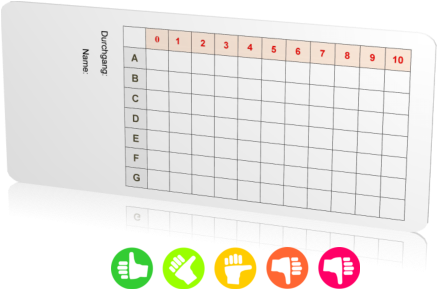

Every team, start-up, or company must overcome these six hurdles if it wants to organize itself
collegially in order to successfully manage projects from within the community.
Consensing Decisions


c) Consensing









Consensing
Consent voting
Conventional
voting

Chapter 21 - Reaching Consensus on Decisions


- The 6 Hurdles
- The Elements
- What are the Elements
- Culture Stage Model
- Gut, Head or Herart Process
- Culture Change
- List of Feelings and Needs
- Requirement Lists
- NVC Magic Circle
- Utopia Magic Circle
- Emergency Emo-Step
- Four Step Circle
- Utopia and Vision
- No-Goes and Must-Haves
- Pain Points
- Consensus
- NVC-plus Strategy
- NVC-plus Matrix
- Discourse
- Card Set
- Download-Tool-Depot
- FAQs
- Events
- Media
How does a team decide?
Successful
cooperation
is
both
a
path
and
a
goal.
Good
methods
and
tools
make
it
much
easier
for
a
team
to
organize
itself.
Encourage
your
team
to
take
the
first
steps
in
this
direction
and
experience
the
difference.

What
is
the
quality
of
the
decisions
in
the
project?
This
is
a
key
question
and
a
self-
managing
team
that
acts
on
eye
level
needs
a
very
good
answer
here.
It
needs
the
ability
to
come
to
smart
decisions
quickly
and
effectively,
even
though
everyone
is
allowed
to
have
a
say.
This
problem
is
well
known
and
various
approaches
have
emerged
over
time,
some
of
which
work
better
and
some
worse.
At
some
point,
four
Austrians
developed
consensing
(SK
principle),
which
is
currently
changing
the
future
of
decision-making.
In
recognition
of
this
method,
we
have
adopted
Systemic
Consensing
for
NVC-plus
and
have
been
able
to
accentuate
the
method
through
the
possibilities
that
NVC-plus
offers
us.
This
gives
us
the
answer
to
how
a
team
being
the
boss
can
come
to
very
good
decisions,
which
means
that
a
team
gets
its
intertwined
potential
into
the
joint
decisions.
However,
as
with
all
NVC-plus
tools,
every
team
is
free
to
use
consensing
whenever
it
suits
them,
or
to
use
other
tools
that
work
better
for
them
at
the time.
Classical consensus
(SK principle, systemic consensus)
The
aim
of
consensing
is
to
make
the
best
decision
in
groups,
teams
and
communities
or
to
develop
these
further
in
the
decision-
making process.
It
starts
with
the
search
for
proposed
solutions.
The
proposal
that
generates
the
least
rejection
in
the
team
wins
-
i.e.
not
the
proposal
with
the
most
yes
votes
or
the
proposal
with
the
fewest
no
votes
(yes-no
duality),
but
the
proposal
with
the
least
no
potential.
The
No
votes
are
weighted
for
this
purpose.
The
extent
of
the
group's
overall
resistance
is
therefore
determined
for
each
individual
solution.
The
proposal
with
the
least
resistance
is successful.
Advantages
•
Quick decision
•
Involves everyone
•
Creative solution finding
•
Even reserved people can participate well
Preparation - clarify the process
•
Card
poll?
Consensing
with
an
app?
With
a
tool?
Anonymously?
Who
writes
down,
who moderates, who counts?
•
Resistance scale from 0-5 / 0-10?
•
How
many
rounds
do
we
want
to
vote?
(2,
3, 4?)
•
Has
everyone
understood
how
consensing
works?
Test
run
with
harmless
task?
1
.
What
exactly
is
the
problem
-
formulated
as
a
questionThis
question
should
not
be
answerable
with
yes
or
no
(i.e.
do
not
formulate
a
decision
question!)
2
.
As
with
brainstorming,
the
suggestions
are not criticized.
3
.
How
much
resistance
does
each
suggestion
generate
for
whom?
Each
suggested
solution
is
rated
by
everyone
with
resistance
points.
Zero
points
=
0
resistance
or
no
problem
with
the
solution.
5
(or
10
if
you
prefer)
points
=
total
resistance
or
you
do
not
support
this
solution.
4
.
Which
solution
has
the
least
resistance?
Y
ou
add
up
the
resistance
points
for
each
solution
and
compare
the
results.
5
.
Everyone
can
discard
their
solution,
adapt
it,
extend
it
or
leave
it
as
it
is.
You
can
discuss
what
the
resistance
is
based
on
in
order
to
improve
the
proposed
solution
or
present
it
more
clearly.
Then
a
second
and
possibly
a
third
round
begins.
In
these
rounds,
the
proposed
solutions
mature
quickly
and
adapt
optimally to the group.
NVC-plus Consensing
For
NVC-plus
consensing,
you
do
not
look
for
different
proposed
solutions
to
a
problem
and
then
agree
on
them,
as
is
usual
in
classic
consensing.
Instead,
you
define
the
problem
and
consider
which
parameters
each
solution
would
have
to
fulfill
in
order
for
the
solution
to
be
a
solution.
For
example,
if
we
are
looking
for
a
restaurant
for
lunch,
then
this
restaurant
would have to:
•
Be open at lunchtime
•
Be accessible within 10 minutes
•
Also offer something vegetarian.
The
problem
is
therefore
only
seen
as
a
framework
for
different
utopias/visions.
These
are
sought
for
NVC-plus
consensus,
listed
and
then
consensualized
as
usual.
In
the
process,
the
utopias/visions
mature
and
in
some
cases
combine with other utopias/visions.
The
advantage
of
this
is
that
the
result
is
not
just
a
solution
to
a
problem,
but
a
positive,
vital flow within the team.











































